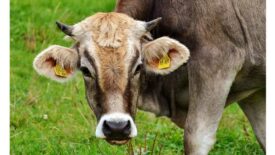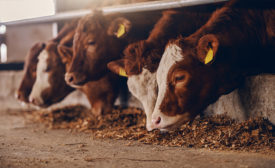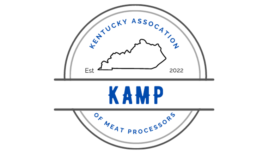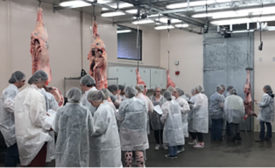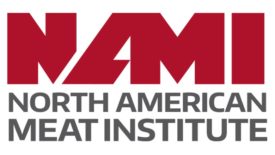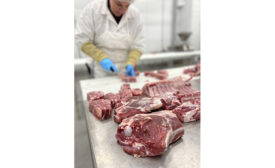Home » meat processing
Articles Tagged with ''meat processing''
The 85th edition of the American Convention of Meat Processors & Suppliers’ Exhibition is set for Aug. 1–3, 2024.
Read More
Tech Topics: Sodium Reduction
Suppliers meeting demand for salt with clean, flavorful ingredients
There is no silver-bullet ingredient that can achieve the desired sodium reductions.
Read More
Montana governor highlights increased support for meat processors
Increasing meat processing capacity in the state to add value to Montana commodities is among the governor’s top priorities.
Read More
American Meat Science Association offers technical assistance to meat processors
Four-pronged funding effort leverages the expertise of AMSA staff and our more than 2,500 members.
Read More
Investigation finds two teens employed illegally at Monogram Meat Snacks in Minnesota
Court enters judgment requiring future compliance by Monogram Food Solutions LLC.
Read More
AAMP welcomes Kentucky Association of Meat Processors as state affiliate
AAMP now has 30 state and regional associations among its affiliates.
Read More
Washington State reinvigorates its meat science programs
WSU’s meat laboratory primarily serves the needs of local customers through offering custom slaughter and fabrication.
May 3, 2023
NAMI opposes PRIME Act again for the risk it poses to food safety
The PRIME Act was reintroduced in the U.S. House and the Senate.
Read More
Prairie View A&M University aims high with Meat Science Center
‘I want to put this program on the map,’ says Meat Science Center Director Dr. Lea Ann Kinman.
April 29, 2023
Stay ahead of the curve. Unlock a dose of cutting-edge insights.
Receive our premium content directly to your inbox.
SIGN-UP TODAYCopyright ©2025. All Rights Reserved BNP Media.
Design, CMS, Hosting & Web Development :: ePublishing


